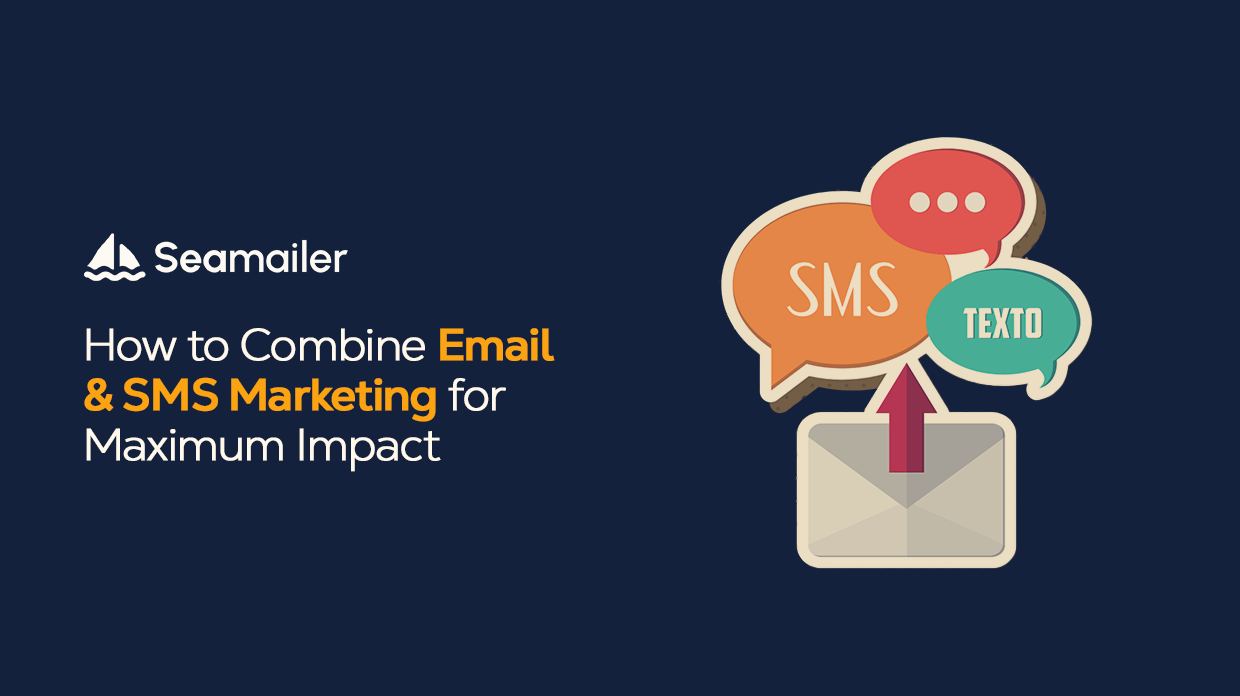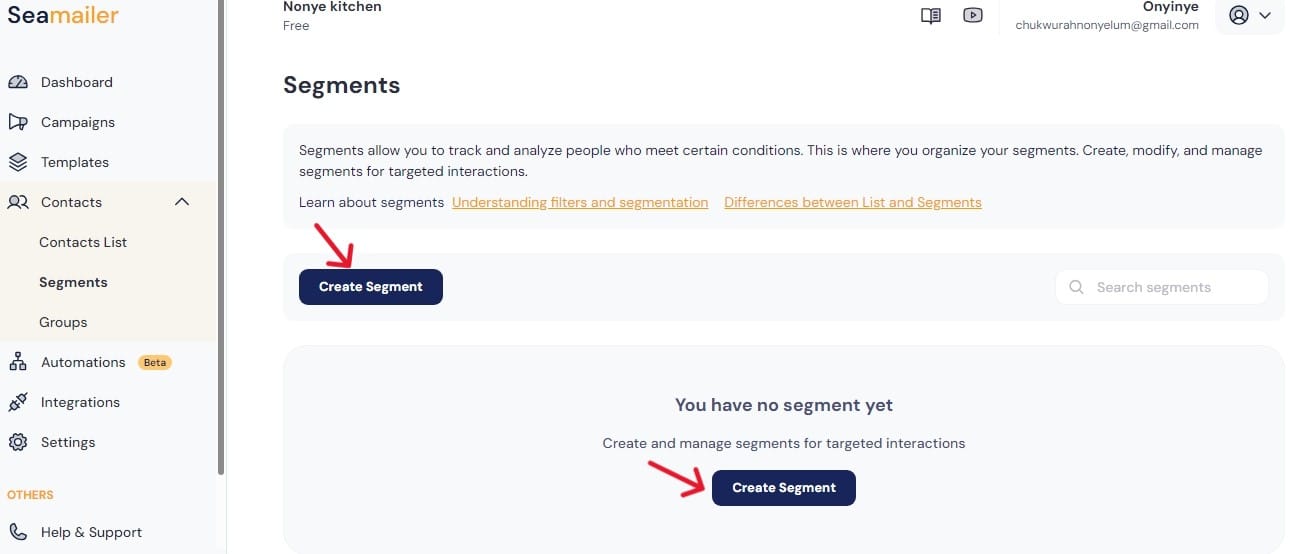How to Combine Email & SMS Marketing for Maximum Impact

Stop treating email and SMS as rivals. Learn how to strategically sync your two most powerful communication channels to boost engagement, revenue, and customer lifetime value. Real-world strategies inside.
When you look at your marketing dashboard, do you see two separate tabs for email and SMS?
You’re not alone. Many businesses treat them like distant cousins—rarely interacting, existing in different worlds, and having entirely separate jobs. Email is for the long form, the newsletters, and the gentle nudges. SMS is for the urgent, the quick hit, the immediate alert.
But here’s the secret the most successful brands know: email and SMS are not rivals; they are a dynamic duo.
When strategically combined, they become a single, unified force capable of maximizing reach, crushing conversion goals, and delivering a customer experience that feels intuitive, timely, and personal. This isn't just about sending more messages; it's about sending the right message at the perfect time on the best channel.
Ready to stop leaving money and engagement on the table? This is your ultimate guide to integrating email and SMS marketing for maximum impact.
Why Two Channels Are Better Than One
To understand the power of synergy, we need to look at the strengths (and weaknesses) of each channel:
Email Marketing: The Long-Game Strategist
- Strengths: Rich media (images, GIFs, HTML), long-form content, detailed segmentation, low cost per send, high ROI for nurtured leads, perfect for complex storytelling and branding.
- Weaknesses: Messages can sit in an inbox for hours (or days), lower urgency, open rates can be inconsistent (average around 20-30%).
SMS Marketing: The Immediate Messenger
- Strengths: Near-perfect open rate (often 98% within minutes), high immediacy, ideal for time-sensitive actions (flash sales, appointment reminders), minimal distraction (only 160 characters).
- Weaknesses: Character limits restrict complexity, higher regulatory scrutiny (TCPA, CTIA), can feel intrusive if overused, best used for specific, urgent actions.
The Synergistic Sweet Spot: Email lays the groundwork, delivering the rich details and nurturing the relationship. SMS provides the immediate action trigger, cutting through the noise right when it matters most.
The Foundation: Building a Unified Subscriber Base
You can't combine the channels if your lists are siloed. The first, non-negotiable step is adopting a unified sign-up strategy.
1. Dual-Channel Opt-in
Don't force a choice. Offer both.
- The Checkbox Strategy: On your email sign-up forms (pop-ups, footer forms), include a simple checkbox like, "Yes, send me occasional text alerts for urgent deals and order updates." Below it, include a field for their mobile number.
- The Thank You Page Upgrade: After a customer subscribes to your email list, the confirmation or "thank you" page is a high-attention spot. Use it to offer an immediate incentive—a 10% off code, for example—in exchange for their mobile number for SMS alerts.
- Point-of-Sale (POS) Integration: If you have a physical presence, ensure your in-store POS system asks for both an email address and a mobile number.
A powerful tool, like Seamailer, can simplify this list management. Look for a platform that can seamlessly ingest subscriber data from multiple sources and—crucially—tag and manage permissions for both channels within a single user profile. This eliminates the risk of sending conflicting messages or violating opt-out rules.
2. Segmenting by Channel Preference
Don't assume everyone wants both. Your database should segment customers based on:
- Email Only: Prefers rich media and detailed communication.
- SMS Only: Prefers fast, urgent, minimal communication.
- Both: The most engaged group, open to all outreach.
This preference-based segmentation is the key to respecting your audience and maximizing retention.

Strategic Playbook: 5 High-Impact Ways to Combine Email & SMS
Once you have your unified list, it's time to put the strategy into action. These five scenarios represent the highest ROI opportunities for channel synergy.
1. The Abandoned Cart Rescue Mission
The abandoned cart sequence is the quintessential example of email and SMS collaboration.
| Step | Channel | Goal | Content |
| 1. Initial Nudge (1 Hour Post-Abandonment) | Gentle reminder, show product image, reinforce value. | "Did you forget something? Your cart is waiting!" Rich email showing items, total cost, and perhaps a small incentive (free shipping). | |
| 2. Urgency Escalation (6 Hours Post-Abandonment) | SMS | Immediate, urgent trigger, short-term incentive. | "Heads up! Your items are selling fast. Finish your order in the next 2 hours & get $5 off. [Link]" |
| 3. Final Offer (24 Hours Post-Abandonment) | Final persuasive message, add social proof (reviews). | "Don't miss out. Your cart will expire in 12 hours." Detailed email with customer reviews and clear checkout CTA. |
The Impact: The SMS cuts through the noise of the inbox at the crucial moment, bringing the customer back into the conversion funnel before they’ve forgotten about the product or purchased elsewhere.
2. The Flash Sale Amplification
Flash sales are defined by scarcity and urgency—a perfect match for SMS, but email is needed for the details.
| Step | Channel | Goal | Content |
| Pre-Sale Tease (24 Hours Prior) | Build excitement, explain the why of the sale. | "🚨 VIP Early Access Coming! We're doing a 48-hour flash sale. Check your inbox/phone tomorrow at 10 AM EST." | |
| Sale Launch Announcement (10:00 AM EST) | SMS | Immediate, powerful start signal. | "LIVE! ⚡ Our 48-Hour Flash Sale is ON! Up to 50% off sitewide. Shop now: [Link]" |
| Sale Details & Discovery (12:00 PM EST) | Detailed product showcase, deep links, and size guides. | Rich email showing the sale collections, highlighting the biggest discounts, and explaining the return policy. | |
| Final Hours Reminder (4 Hours Before End) | SMS | Final, hard-stop urgency trigger. | "T-Minus 4 Hours! The 50% Off sale ends at midnight. Don't wait. [Link]" |
The Impact: Email provides the discovery and browsing experience; SMS drives the immediate traffic surge required to make a flash sale truly "flash."
3. The New Subscriber Welcome Series
Your welcome sequence sets the tone. Use SMS to show you value their time and attention immediately.
| Step | Channel | Goal | Content |
| Instant Confirmation (0 Minutes) | SMS | Validate subscription, deliver the welcome code immediately. | "Welcome to the family! Your 15% off code is WXYZ. Thanks for subscribing. [Link]" |
| Brand Story & Nurture (2 Hours) | Introduce the brand, share your mission, and suggest products. | "More than just a code: Here's our story." Detailed email with founder video or mission statement, building brand trust. | |
| Product Education (3 Days) | Educate on a key product or best-seller, leveraging rich media. | Email highlighting your top-rated product with a clear video tutorial or carousel of lifestyle images. |
The Impact: Using SMS for the instant delivery of the welcome coupon is a major win. It bypasses the inbox clutter and ensures the customer has the incentive in their hand right away, making them more likely to make a quick first purchase.
4. Back-in-Stock Alerts
When a popular item is restocked, speed is everything. A customer might check their email once a day, but they check their phone dozens of times.
- The Strategy: When the inventory hits zero, your website offers a "Notify Me" option that requires both an email and a phone number.
- The Execution: The moment the product is restocked, send a high-priority SMS alert: "It’s Back! Your requested [Product Name] is officially back in stock, but inventory is limited! Buy now: [Link]"
- The Follow-up: 2 hours later, send a rich-media Email to those who haven't purchased yet, showing the product in detail, reinforcing its popularity, and linking directly to the product page.
The Impact: The SMS alert can trigger a purchase within minutes, especially for high-demand, limited-edition items.
5. Post-Purchase & Service-Oriented Messaging
This is where the two channels can truly shine in terms of customer experience and building long-term loyalty.
| Channel | Focus Area | Why It Works | Example Content |
| SMS | Urgent Notifications (Shipping, Delivery, Appointment Reminders) | High open rate ensures the customer sees critical, time-sensitive information immediately. | "Your package is scheduled for delivery today! Track here: [Link]" |
| Post-Purchase Nurturing (Reviews, Education, Upsells) | Allows for detailed product guides, cross-sell recommendations, and rich feedback forms. | "How are you loving your new gear? Write a review and get 10% off your next purchase." | |
| SMS | Support/2FA (Two-Factor Authentication) | Direct, secure, and fast for immediate, high-security actions. | "Your verification code is 6289. This code expires in 5 minutes." |
The Impact: By dedicating SMS to critical, urgent service messages, you prove to the customer that you respect their time, which drastically reduces the chances of them opting out of your marketing list later.
Best Practices & Channel Etiquette: Don't Ruin the Relationship
The fastest way to lose a subscriber on both channels is to annoy them with one. Adhere to these principles to maintain a healthy, profitable relationship:
A. Prioritize the Customer Experience
- Always Deliver Value: Every SMS must have a clear, immediate purpose. If you can't justify the urgency, use email. Texting a customer a generic weekly newsletter is a quick path to an opt-out.
- Clear Opt-Out: For SMS, it is legally required and essential for good etiquette. Ensure people can easily reply STOP and are immediately removed from the list. Seamailer and similar platforms offer automatic opt-out handling, which is crucial for compliance.
- Time Zone Respect: Never send an SMS outside of reasonable hours (e.g., 9 AM to 8 PM local time). An email arriving at 3 AM is annoying; a text message arriving at 3 AM is disruptive.
B. Consistent Brand Voice
While the format differs, the voice of your brand must remain consistent.
- Email: Can be more formal and verbose, but the core brand personality must be recognizable.
- SMS: Must be concise and impactful, but still use the same tone—whether it's playful, serious, minimalist, or conversational. The same brand should be speaking on both channels.
C. Attribution and Tracking
You can’t optimize what you can’t measure.
- Use Unique Links: Every campaign—whether email or SMS—must use unique UTM parameters for the links. This allows you to see in your analytics which channel initiated the final click and purchase. Did the initial email warm up the customer, or was the SMS the final closing trigger? You need to know.
- Channel-Specific Metrics: Track metrics appropriate for the channel. For email, focus on Open Rate and Click-Through Rate (CTR). For SMS, focus on CTR and Opt-Out Rate (as open rates are near 100% and less useful).
The Future is Unified
In the modern marketing landscape, treating email and SMS as separate entities is an outdated, limiting mindset. Your customers don't differentiate; they just expect you to communicate with them intelligently.
By combining the rich detail and nurturing power of email with the speed and immediacy of SMS, you create a marketing ecosystem that respects the customer's time while maximizing your revenue potential.
The key to unlocking maximum impact is strategic, customer-centric orchestration. Start with a unified platform, build your dual-opt-in list, and implement these five strategic campaigns. Your engagement and ROI will thank you for it.

